These cookies are named after Beacon Hill which is part of Boston and one of the most historic settlements in the United States. The area was originally a three peaked hill, one of which was the site of the eponymous beacon. In the mid-C19th all the peaks were levelled to create flat land for residential development, the spoil being used to build up lower lying land near the water. Most houses from this period were brick built row houses (in England we would call them terraces) in either Federal or Greek Revival style. The period atmosphere has remained as many streets are still cobblestone, with brick sidewalks (pavements) and gas lighting; gardens hidden behind the houses are said to be beautiful.
A writer called Ellen (on the harvardcommonpress.com website) says that the area with its crooked streets looks like someone, having smashed a plate, decided to base the city’s layout on the pattern made by the pieces on the floor – an arresting image and a better formula for interesting town planning than most.
Famous sometime residents include: Louisa M.Alcott, Robert Frost, Julia Ward Howe (author of The Battle Hymn of the Republic), Sylvia Plath, Teddy Kennedy, John Kerry (current US Secretary of State) and Uma Thurman. (A bit like the Hammersmith/Chiswick waterfront from a couple of posts ago then …)
Recipe taken from: 500 Cookies by Philippa Vanstone; Apple Press, 2005.
Ingredients
150 g dark chocolate
2 egg whites
1/4 tsp cream of tartar
50 g golden caster sugar
100 g chopped pecans
1/2 tsp vanilla extract
Pre-heat oven to 175 ºC/155º C for a fan oven/350ºF/Gas mark 4
Melt the chocolate in a bowl over a pan of barely simmering water.
Beat the egg whites with the cream of tartar until the soft peak stage.
Add one third of the sugar, beat for a further minute, then add another third of the sugar. Beat until the whites are stiff and then fold in the remaining sugar.
Fold the nuts, chocolate and vanilla into the mixture.
Line oven trays with baking parchment and add teaspoons of the mixture about 4-5 cms apart.
Bake for 10-12 minutes until the cookies are cracked and firm to the touch.
Remove the parchment sheets to a wire rack and when the cookies have cooled peel off the paper.
Makes 25-30 cookies
Recipes on the internet are hazy as to whether a particular nut should be used. Quite a few opt for hazelnuts but pecans, walnuts and even macadamia nuts have their supporters. No recipe suggests almonds, so at least that’s quite clear. I followed the recipe in the book mentioned above and used pecans but I would have preferred hazelnuts and shall try using those next time.
The addition of cream of tartar acts to stabilise the egg whites, adjusting their pH, increase their volume and their tolerance to heat. Cider vinegar does the same thing and many recipes opt for this. (Lemon juice too but perhaps the taste would be too intrusive in this case.)
This is a great recipe which is easily and quickly whipped up from store cupboard favourites. (I always have a supply of good chocolate for cooking and nuts of various sorts – don’t you? The chocolate tends to live in the vicar’s study rather than the kitchen – for obvious reasons.) With no flour and no butter these cookies are a lovely light, chocolatey treat.
Too much yellow – surely not?

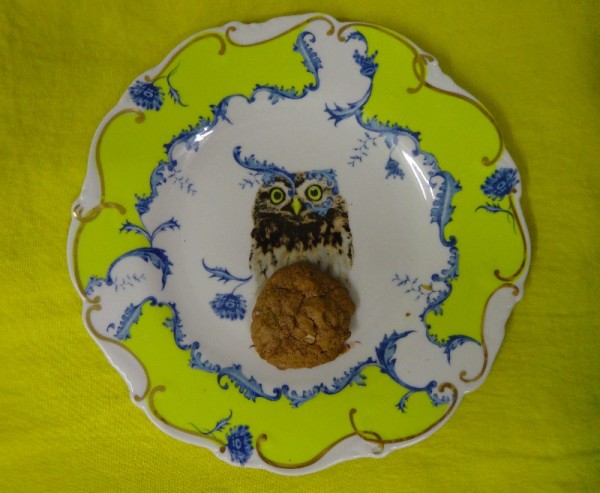
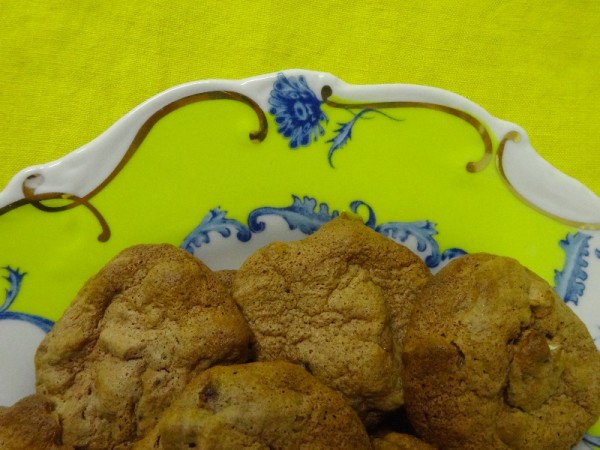
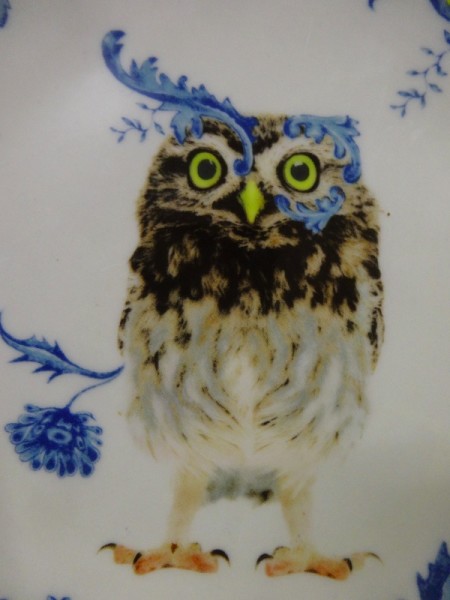
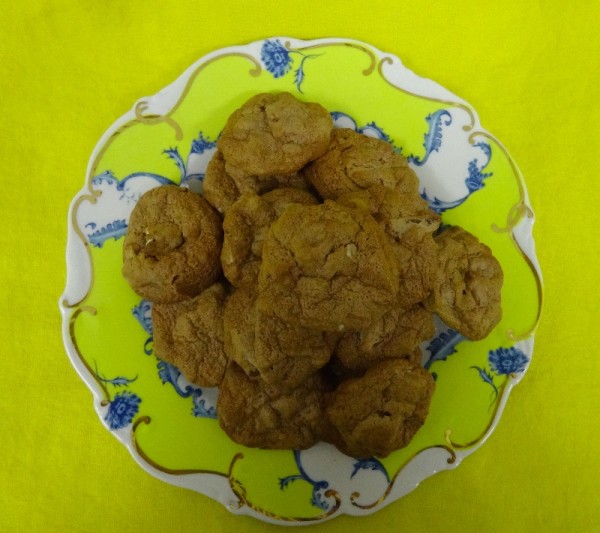
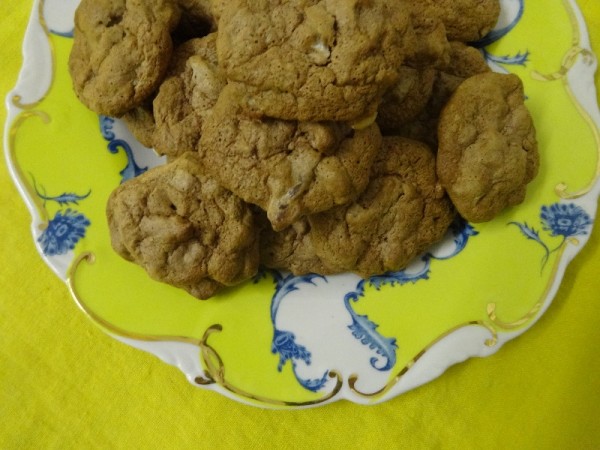
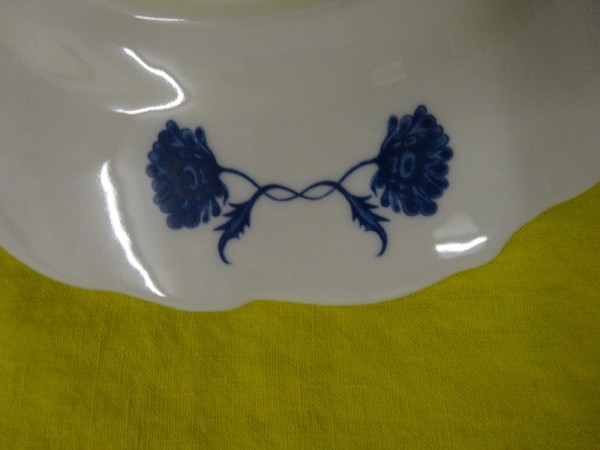
4 Comments
Beacon Hill does sound fascinating!
No such thing as too much yellow. Unless it’s the oilseed flowers, of course…
Glad to hear others enjoy yellow.
It was interesting to find out about Beacon Hill – though I still haven’t discovered why the cookies were so named.
Such a lot of famous writers from Beacon Hill! Your cookies look delicious as they always do but most of all I love the owl plate! Do you remember The Owl Service by Alan Garner which was I think on the BBC back in the 60’s (that’s post-mid 20th century – I think). A whole set of owl plates was required… I have a similar one… Funny how a plate of cookies can lead to the wonderful Mr Garner who is now 80!
I do remember The Owl Service and also other of Alan Garner’s books and I have a hazy memory of something on the television (though only now you mention it). Of course today the first literary owl to come to children’s minds would be Hedwig, Harry Potter’s owl…